This article was written exclusively for Investing.com
- Crude oil taking the stairs higher
- Next technical resistance level: over the $100 per barrel level
- Petrobras: Brazilian energy producer
- The shares have been under siege - Earnings have exceeded expectations, and the dividend is attractive
- A 2022 election could cause a rally in PBR shares
Brazil is a leading commodity-producing country. The nation's climate and geology make the most populous country in South America a virtual supermarket to the world.
Brazil is the top producer of sugar, coffee, and oranges. The country's annual soybean crop is second only to the United States. Brazil produces many other raw materials as well, including energy.
Petroleo Brasileiro Petrobras (NYSE:PBR) is a diversified energy company. While PBR is currently a state-run enterprise, President Jair Bolsonaro is considering privatizing Petrobras.
Since the turn of this century, PBR shares traded from a low of $2.33 in 2002 to a high of $77.61 per share in 2008 when crude oil reached its all-time high. At the $10.20 level on Nov. 1, PBR shares were much closer to the lows than the highs, while crude oil has been moving higher. Still, PBR stock offers value and the company pays shareholders while they wait for capital appreciation, rewarding them with an attractive dividend yield.
Crude oil taking the stairs higher
Crude oil has been moving higher since reaching a record low on the nearby NYMEX futures contract in April 2020. 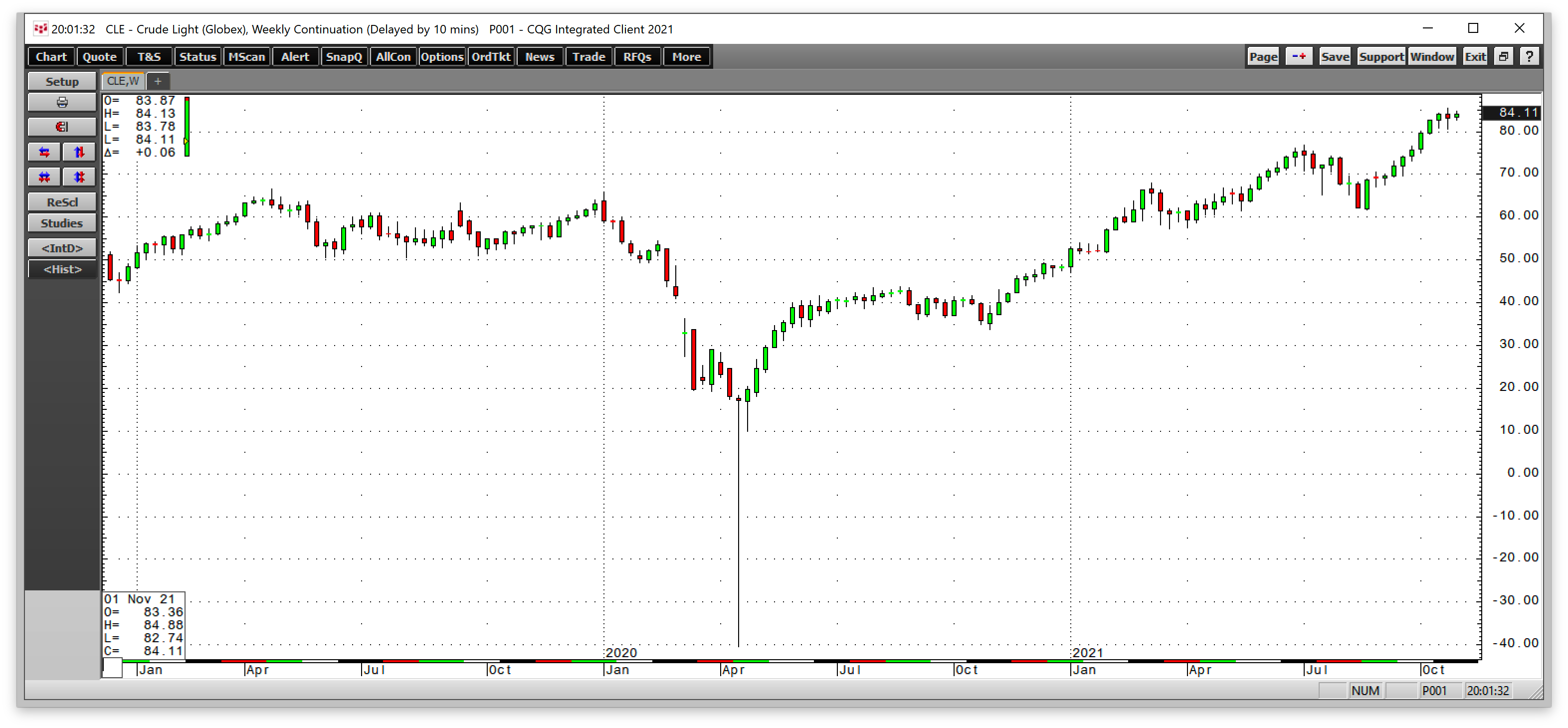
Source: CQG
As the weekly chart highlights, nearby crude oil futures rose from the all-time bottom at negative $40.32 per barrel in April 2020 to the commodity's most recent high at $85.41 during the final week of October. Crude oil appreciated by $125.73 per barrel. 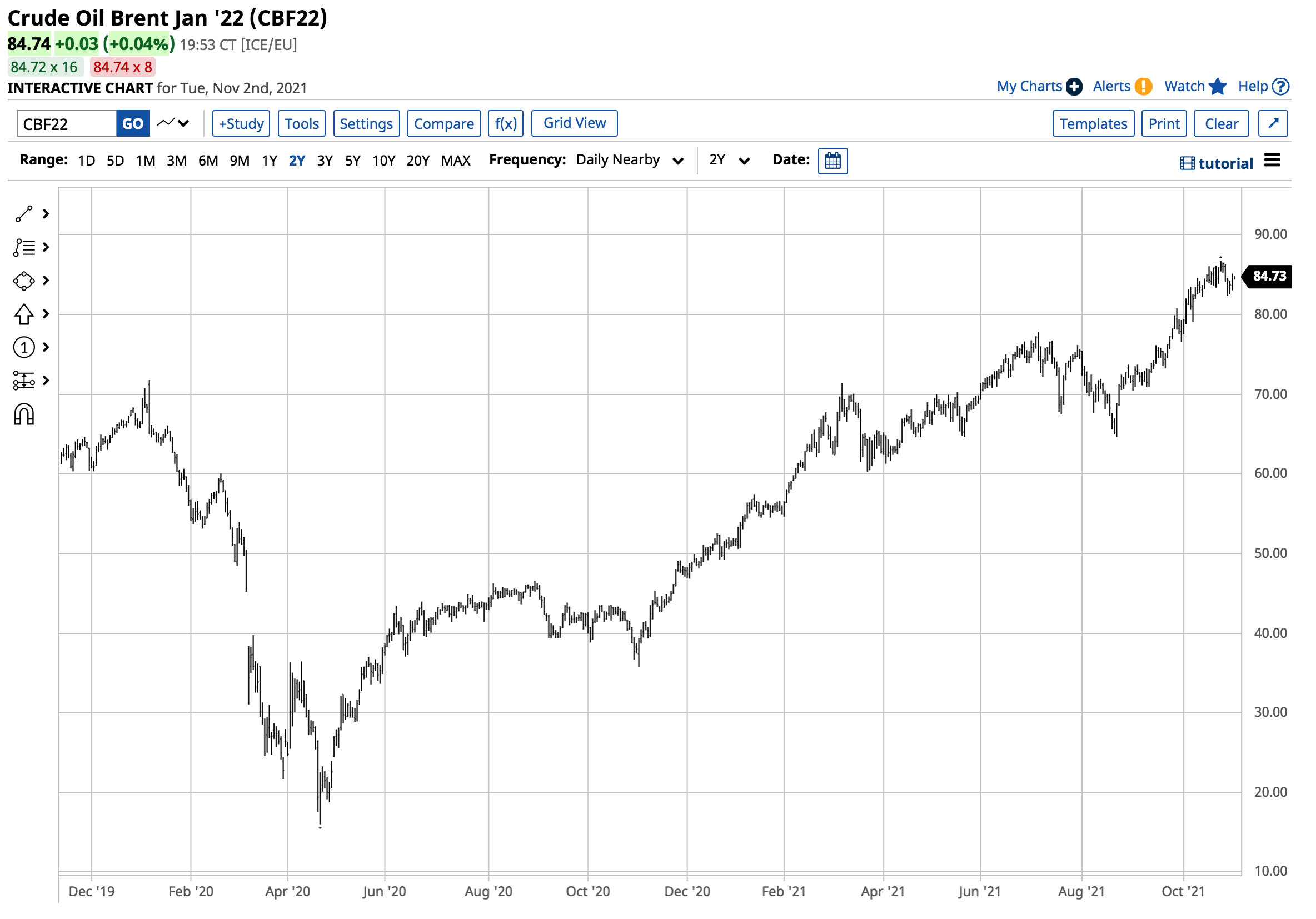
Source: Barchart
Brent crude oil rose from a century low of $15.98 in April 2020 to its most recent high of $86.70 on Oct. 25, a $70.72 per barrel gain.
Next technical resistance level: over the $100 per barrel level
NYMEX crude oil broke above its critical technical resistance level over the past months. 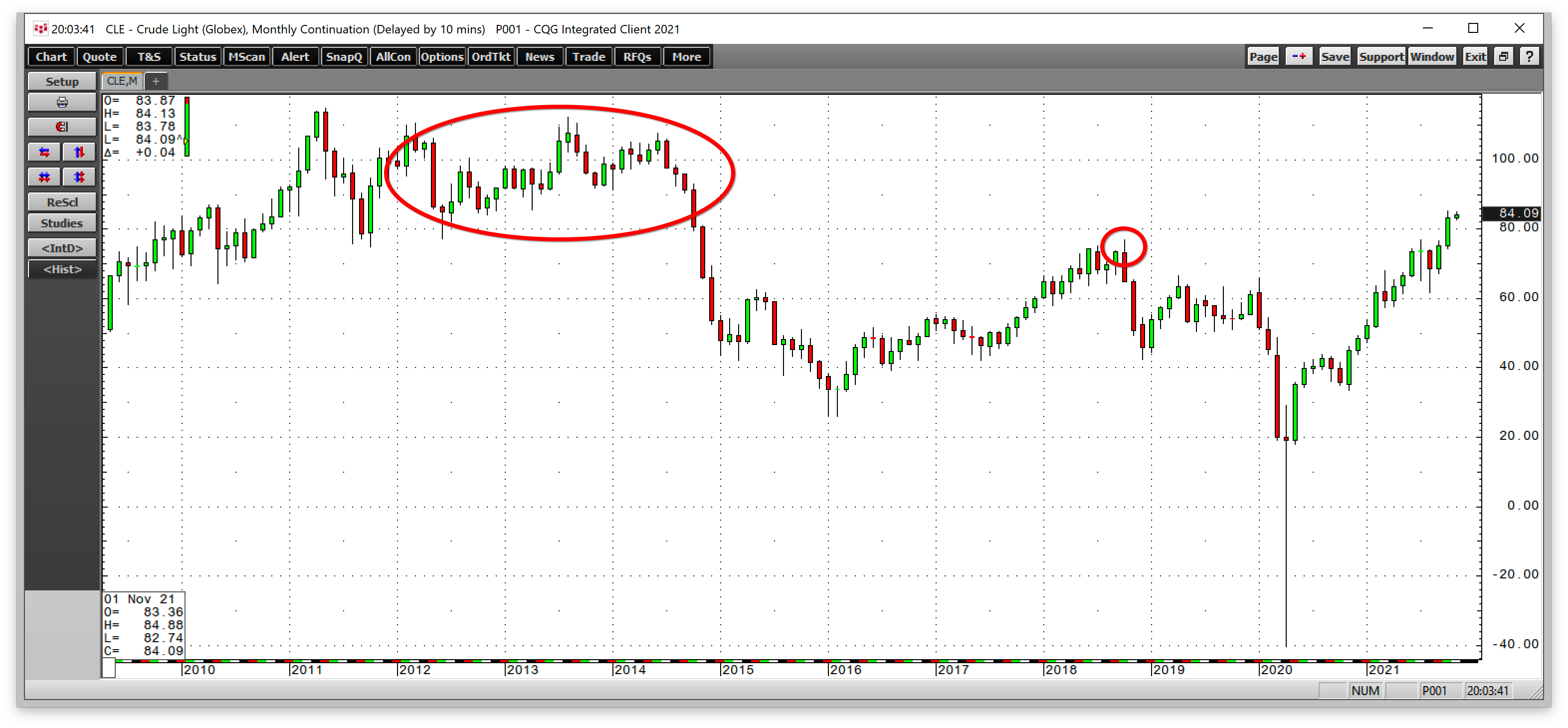
Source: CQG
The monthly chart illustrates the move above the October 2018 $76.90 high. Technical resistance is now at the 2014 high at over the $100 per barrel level. 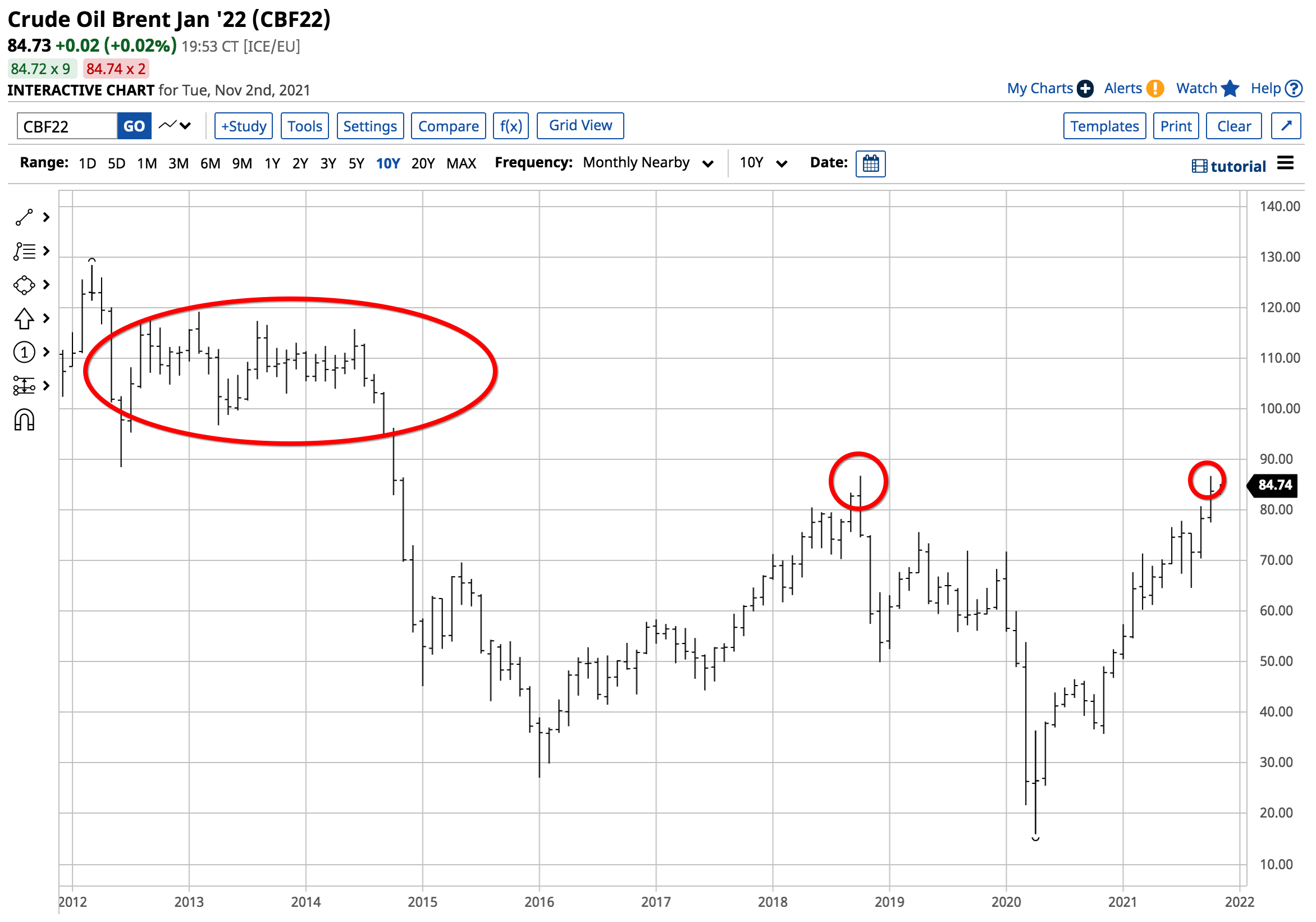
Source: CQG
The continuous Brent futures contract chart shows the price came within four cents of the October 2018, $86.74 high during October 2021 when it reached $86.70 per barrel. The 2018 high is a gateway to the $100 per barrel level for the Brent benchmark.
In March 2020, US daily crude oil production reached a record 13.1 million barrels per day. As the Biden administration addresses climate change with a strict regulatory environment for fossil fuels, US output has declined to 11.3 mbpd for the week ending on Oct. 22, 2021.
In 2021, the current administration canceled the Keystone XL pipeline project and ended fracking and drilling for oil and gas on federal lands in Alaska. As the US’s role in crude oil production worldwide declines, it once again becomes dependent on OPEC and Russia. Over the summer, the Biden administration asked the cartel to increase petroleum output. OPEC+ declined.
The bottom line is the pricing power is back in the cartel’s hands. Energy pricing decisions are now in the hands of Riyadh and Moscow. The cartel’s mission is to deliver the highest possible price for its members. After years of suffering from low prices as US shale production rose, for OPEC+ it’s payback time.
For consumers in the US and worldwide, there's no doubt they will be paying a lot more for oil and oil products. The cartel would much rather sell one barrel at $100 than two at $40 per barrel.
Petrobras: Brazilian energy producer
While the stricter regulatory landscape in the US and Europe and environmental advocates will not incentivize oil companies to expand output, existing producers are in a position to profit.
Petroleo Brasileiro Petrobras is Brazil's state-owned energy company. Petrobras is also a world-leading energy producer. The company’s profile states:

Source: Investing.com
PBR is a multinational energy company with room to run after years of selling on the back of political turmoil in Brazil. At $10.20 per share on Nov. 1, PBR had a $64.047 billion market cap. PBR trades an average of over 33.1 million shares each day.
Shares have been under siege but earnings exceeded expectations; dividend is attractive
PBR pays an annual dividend of $1.00 per share for a significantly above-market 10.18% yield. As well, over the past four quarters, PBR has exceeded analysts’ consensus earnings forecasts.
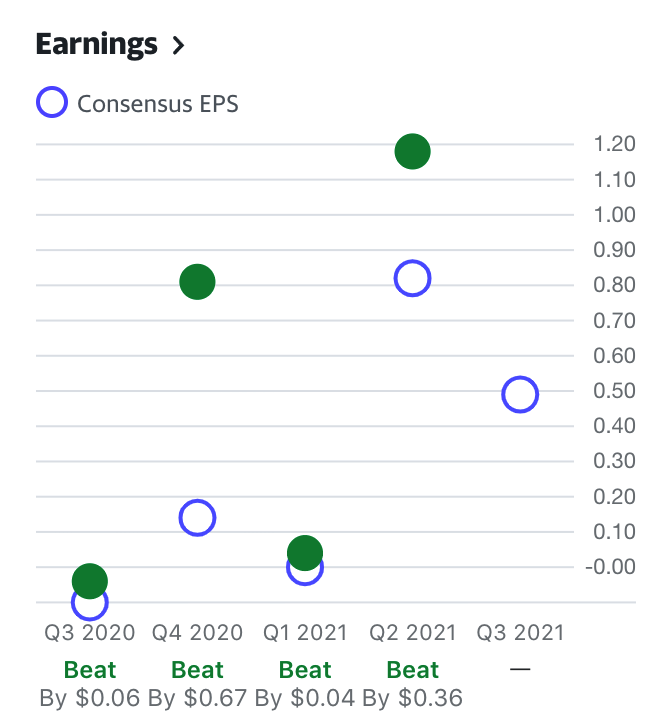
Source: Yahoo (NASDAQ:AABA) Finance
The new oil price highs in late October mean the streak of beats for PBR could continue in future quarters. For Q3 the company beat on EPS as the company earned more than 49 cents per share forecast, but missed on revenue.
In addition, a survey of thirteen analysts polled by Investing.com project an average price target of $13.28 per share, a 30.18% upside above the closing level on Oct. 29. The range of forecasts is from $10.80 to $16 per share.
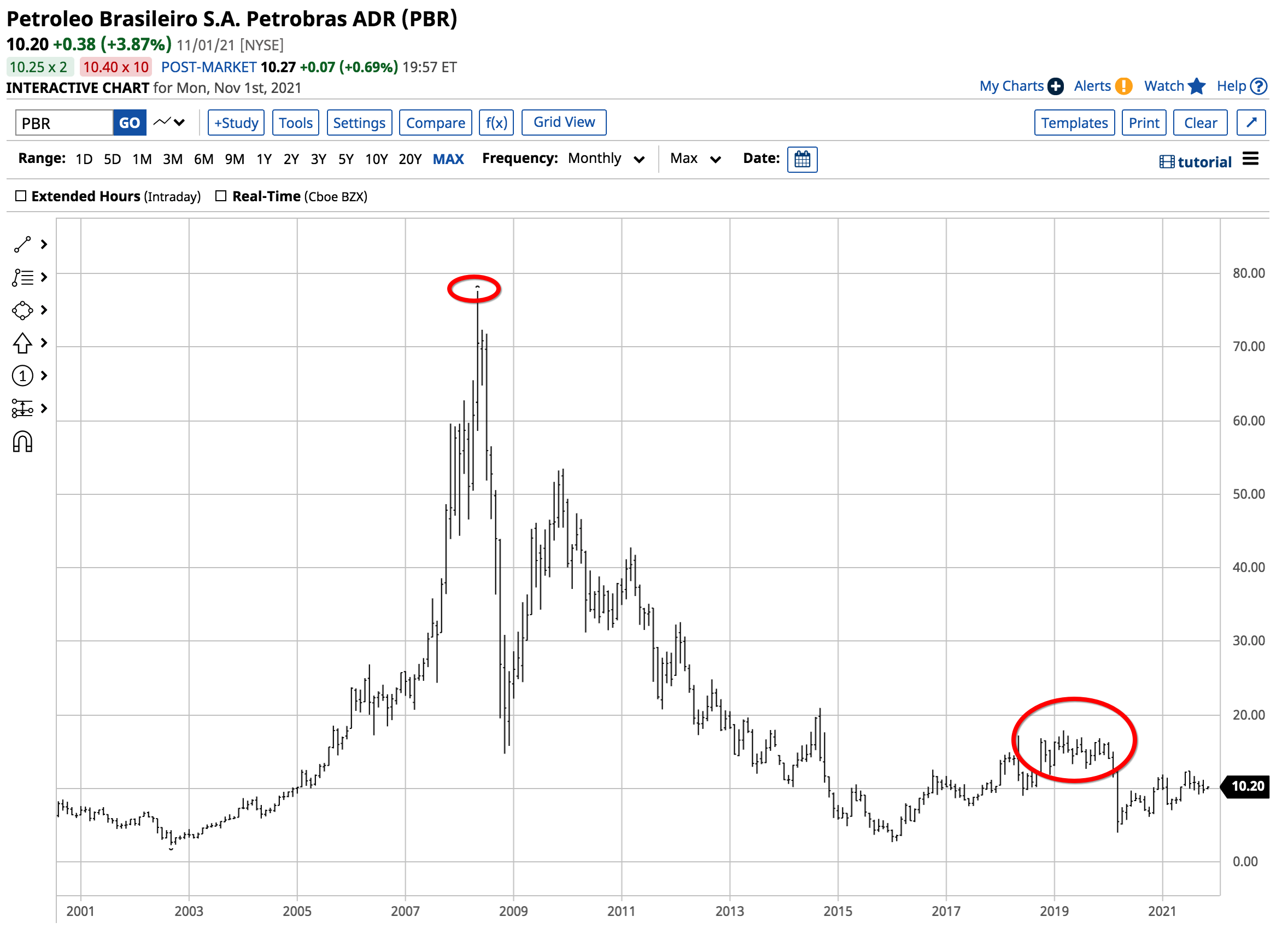
Source: Barchart
The chart above shows that technical resistance for PBR shares stands at around the $17-$18 level. The all-time high came in 2008 when crude oil reached its record high. PBR shares peaked at $77.61 in May 2008.
Brazil's 2022 election could spur a rally in PBR shares
President Bolsonaro is not a popular figure in Brazil. The Brazilian Senate recently accused the leader of crimes against humanity, blaming him for the nation’s position as second globally in COVID-19 deaths.
Recently, he replaced PBR’s CEO, sending the shares lower. With the next Brazilian Presidential election in 2022, Bolsonaro has said that he will either serve another term, be jailed, or wind up dead. Brazil is a political and economic nightmare, but PBR shares are at a level that makes them a bargain in the oil market. The country's President recently said that privatization of PBR would be an “ideal” move given the current high fuel prices.
A new administration could turbocharge gains for the profitable company. The very rich dividend provides plenty of income for investors waiting for capital appreciation.
I am a scale-down buyer of PBR shares as it offers one of the most attractive valuations of worldwide integrated energy companies. Risk-reward favors the upside as the price of oil continues to climb.
